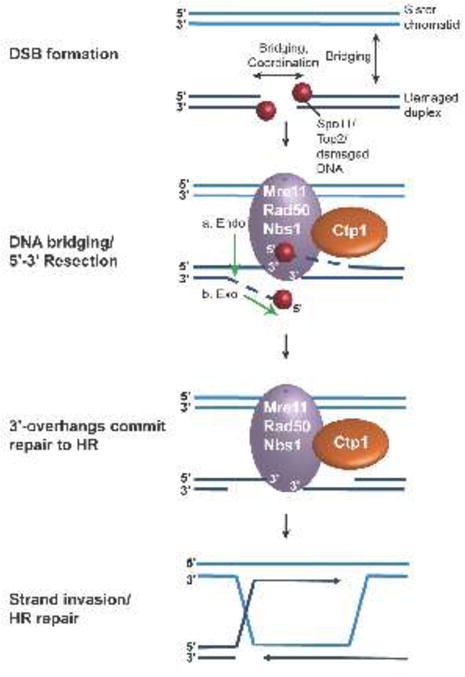Figure 1.

Initiation of homologous recombination. DNA double-strand breaks (DSBs) often contain “dirty” ends, with secondary DNA structure, protein and chemical adducts. Mre11-Rad50-Nbs1 (MRN) recognizes DNA breaks, bridging both across the DSB and to the sister chromatid. Mre11 is stimulated by Ctp1 and carries out a two-step resection, utilizing first endonuclease activity, then 3′-5′ exonuclease activity, generating single-stranded 3′-overhangs. These ssDNA overhangs are further resected and then bound by Rad51, forming a nucleoprotein filament for invasion of the sister chromatid, initiating homologous recombination repair.
